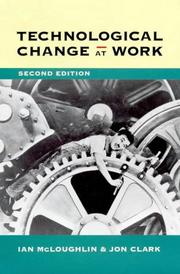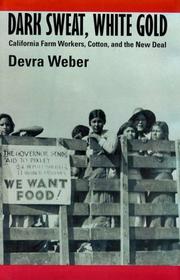| Listing 1 - 10 of 13 | << page >> |
Sort by
|
Book
ISBN: 1462308635 1455282782 1281600245 1455216070 9786613780935 Year: 1994 Publisher: Washington, D.C. : International Monetary Fund,
Abstract | Keywords | Export | Availability | Bookmark
 Loading...
Loading...Choose an application
- Reference Manager
- EndNote
- RefWorks (Direct export to RefWorks)
This paper develops a matching model of the labor market under wage rigidity when hiring decisions are irreversible. There are two types of workers, the skilled and the unskilled. The model is used to analyze whether technological advances may have increased unemployment. It is shown that it is likely to be so if they are associated with an increase in the productivity and/or the supply of skilled workers relative to unskilled workers. These effects are stronger when hiring decisions are more irreversible.
Labor --- Unemployment: Models, Duration, Incidence, and Job Search --- Demand and Supply of Labor: General --- Labor Force and Employment, Size, and Structure --- Professional Labor Markets --- Occupational Licensing --- Labour --- income economics --- Unemployment rate --- Unemployment --- Labor markets --- Labor force --- Unskilled labor --- Labor market --- Income economics
Book
ISBN: 1462325726 1455212180 1281296848 1455250414 9786613778444 Year: 1994 Publisher: Washington, D.C. : International Monetary Fund,
Abstract | Keywords | Export | Availability | Bookmark
 Loading...
Loading...Choose an application
- Reference Manager
- EndNote
- RefWorks (Direct export to RefWorks)
Spain has the most serious and persistent unemployment problem in Europe, with an unemployment rate that reached 24.6 percent in early 1994. This paper explores the characteristics of this unemployment problem, its causes, and provides a brief discussion of recent labor market reform measures and their likely Impact. A demographic shift in recent years has produced a large rise in female labor force participation and a decrease in agricultural jobs to which the economy has been unable to adjust. The effects of generous unemployment benefits and the large underground economy may explain 6–12 percentage points of the resulting unemployment, but the remainder must be explained by failures and rigidities in the labor market. The paper presents econometric evidence that unemployment displays hysteresis, and that wages are not responsive to changes in the unemployment rate. This evidence supports the claim that insider-outsider factors and rigidities in the legal structure of the labor market are responsible for much of the high unemployment rate. Recent reforms have improved the functioning of the labor market, but they are unlikely to be sufficient to reduce unemployment to single digit rates without further action.
Labor --- Labor Force and Employment, Size, and Structure --- Wages, Compensation, and Labor Costs: General --- Mobility, Unemployment, and Vacancies: General --- Employment --- Unemployment --- Wages --- Intergenerational Income Distribution --- Aggregate Human Capital --- Aggregate Labor Productivity --- Unemployment: Models, Duration, Incidence, and Job Search --- Demand and Supply of Labor: General --- Labour --- income economics --- Labor force --- Labor markets --- Unemployment rate --- Labor market --- Economic theory --- Spain --- Income economics
Book
ISBN: 1462399398 1455246484 1281602655 1455284718 9786613783349 Year: 1994 Publisher: Washington, D.C. : International Monetary Fund,
Abstract | Keywords | Export | Availability | Bookmark
 Loading...
Loading...Choose an application
- Reference Manager
- EndNote
- RefWorks (Direct export to RefWorks)
This paper examines recent developments in the Canadian labor market. Using disaggregated labor market data, various hypotheses concerning the slow employment growth and rise in unemployment since 1990 are evaluated. The analysis indicates that a large part of the recent rise in the unemployment rate may reflect an increase in the structural rather than the cyclical component of unemployment. Various sources of labor market rigidities that may have contributed to the increase in structural unemployment are examined. In particular, the role of the unemployment insurance system in contributing to labor market rigidity and measures for reforming this system, including the recent proposals of the government, are discussed. Finally, this paper examines active labor market policies that could help to alleviate structural unemployment.
Labor --- Unemployment: Models, Duration, Incidence, and Job Search --- Employment --- Unemployment --- Wages --- Intergenerational Income Distribution --- Aggregate Human Capital --- Aggregate Labor Productivity --- Demand and Supply of Labor: General --- Labor Force and Employment, Size, and Structure --- Unemployment Insurance --- Severance Pay --- Plant Closings --- Labour --- income economics --- Unemployment rate --- Labor markets --- Labor force --- Labor market --- Economic theory --- Canada --- Income economics
Book
ISBN: 1462374093 1455284858 1282044397 1455232270 9786613797537 Year: 1994 Publisher: Washington, D.C. : International Monetary Fund,
Abstract | Keywords | Export | Availability | Bookmark
 Loading...
Loading...Choose an application
- Reference Manager
- EndNote
- RefWorks (Direct export to RefWorks)
This paper assesses the responsiveness of wages and labor force movements to employment shocks across British and U.S. regions and across Europe using a multivariate vector autoregression technique. The paper finds inflexible real wages in all three areas in that each area’s real wage responds very little to employment shocks. However, the response of the labor force to employment shocks is much greater in the United States compared to Europe. The strong labor force response in the United States prevents any persistence in relative regional unemployment rates whereas the lack of mobility in Europe results in persistent unemployment rate differentials across British regions and European nations. Europe must therefore adopt measures to reduce barriers to immobility if it is to succeed in moderating the persistence in relative unemployment rates.
Labor --- Geographic Labor Mobility --- Immigrant Workers --- Unemployment: Models, Duration, Incidence, and Job Search --- Employment --- Unemployment --- Wages --- Intergenerational Income Distribution --- Aggregate Human Capital --- Aggregate Labor Productivity --- Labor Force and Employment, Size, and Structure --- Wages, Compensation, and Labor Costs: General --- Labour --- income economics --- Unemployment rate --- Labor force --- Real wages --- Economic theory --- Labor market --- United States --- Income economics

ISBN: 033519009X 9780335190096 Year: 1994 Publisher: Philadelphia: Open university press,
Abstract | Keywords | Export | Availability | Bookmark
 Loading...
Loading...Choose an application
- Reference Manager
- EndNote
- RefWorks (Direct export to RefWorks)
Focuses on automation in its most pervasive contemporary guise - computing and information technologies. The authors present their own "processual" framework for understanding technological change and its outcomes, and devote attention to the independent influence of the technology itself.
Labor supply --- Marché du travail --- Effect of technological innovations on --- Effets des innovations sur --- Marché du travail --- Labor force --- Labor force participation --- Labor pool --- Work force --- Workforce --- Labor market --- Human capital --- Labor mobility --- Manpower --- Manpower policy --- Industries --- Technology --- Innovation --- Great Britain --- #SBIB:316.334.2A554 --- Partijen en strategieën in de onderneming: technologische verandering en zijn effecten op structuur en inhoud van de arbeidsposten --- Labor supply - Effect of technological innovations on - Great Britain

ISBN: 9004098968 9004491414 9789004098961 9789004491410 Year: 1994 Volume: 4 Publisher: Leiden;Boston BRILL
Abstract | Keywords | Export | Availability | Bookmark
 Loading...
Loading...Choose an application
- Reference Manager
- EndNote
- RefWorks (Direct export to RefWorks)
This is an extensive study of labour in the social and economic life of Islamic communities around the Mediterranean in the medieval period, 9th-15th century.Based on a large number of primary and secondary sources, it contains a comprehensive dictionary of trades and occupations practised by both men and women, followed by a statistical and textual examination of the division of labour, the distribution of the labour force, occupational structures and the role of labour in the Islamic economy. It also describes ethnic divisions of labour, social status and image. A group of literary sources yields evidence that Muslim theologians, mystics and philosophers gradually formulated a doctrinal framework for labour.This book will prove a valuable resource for any student of medieval Islamic economic and labour history.
History of Asia --- Islam --- anno 700-799 --- anno 1200-1799 --- anno 600-699 --- anno 800-1199 --- Labor supply --- Sexual division of labor --- Occupations --- Women --- Marché du travail --- Division sexuelle du travail --- Professions --- Femmes --- Classification --- Employment --- Travail --- Islamic Empire --- Empire islamique --- Economic conditions. --- Conditions économiques --- -Occupations --- -Sexual division of labor --- -Women --- -Human females --- Wimmin --- Woman --- Womon --- Womyn --- Females --- Human beings --- Femininity --- Division of labor by sex --- Division of labor --- Sex role --- Sex discrimination in employment --- Career patterns --- Careers --- Jobs --- Trades --- Handicraft --- Vocational guidance --- Work --- Labor force --- Labor force participation --- Labor pool --- Work force --- Workforce --- Labor market --- Human capital --- Labor mobility --- Manpower --- Manpower policy --- -Islamic Empire --- -Arab countries --- Arab Empire --- Empire, Islamic --- Middle East --- Muslim Empire --- Economic conditions --- History --- Classification. --- -Classification --- -Economic conditions --- Marché du travail --- Conditions économiques --- Human females --- Arab countries --- Labor supply - Islamic Empire. --- Sexual division of labor - Islamic Empire. --- Occupations - Islamic Empire - Classification. --- Women - Employment - Islamic Empire.

ISBN: 1855672553 1855672561 Year: 1994 Publisher: London : Pinter,
Abstract | Keywords | Export | Availability | Bookmark
 Loading...
Loading...Choose an application
- Reference Manager
- EndNote
- RefWorks (Direct export to RefWorks)
Labour market --- Employment forecasting --- Labor supply --- Technological unemployment --- Twenty-first century --- Emploi --- Chômage technologique --- Vingt et unième siècle --- Effect of technological innovations on --- Forecasting --- Forecasts --- Prévision --- Prévisions --- 658.11 --- Werkgelegenheid en technologie 331.526:60 --- Kinds and forms of enterprise --- Employment forecasting. --- Forecasting. --- Forecasts. --- 658.11 Kinds and forms of enterprise --- Emploi [Prevision de l'] --- Emploi--Prevision --- Forecasting [Employment ] --- Labor supply--Forecasting --- Voorspelling van werkgelegenheid --- Werkgelegenheid [Voorspelling van] --- Chômage technologique --- Vingt et unième siècle --- Prévision --- Prévisions --- Unemployment, Technological --- Unemployment --- Labor force --- Labor force participation --- Labor pool --- Work force --- Workforce --- Labor market --- Human capital --- Labor mobility --- Manpower --- Manpower policy --- Forecasting, Employment --- Economic forecasting --- Effect of technological innovations on&delete& --- Technological unemployement --- Labor supply - Effect of technological innovations on - Forecasting. --- Technological unemployment - Forecasting.
Book
ISBN: 1462309526 1455264679 Year: 1994 Publisher: Washington, D.C. : International Monetary Fund,
Abstract | Keywords | Export | Availability | Bookmark
 Loading...
Loading...Choose an application
- Reference Manager
- EndNote
- RefWorks (Direct export to RefWorks)
This paper examines the effects of demographic dynamics on the measured rates of economic growth. First, it develops a model of production with labor productivity that varies with age. Second, it uses macroeconomic and demographic data to estimate the relative productivity of different age groups. Third, it constructs a panel database of effective labor supply in order to reflect the changing age-structure of the population. Fourth, it decomposes the historical measured growth rates into effects of demographic dynamics and into “real” growth rates, net of demographic effects.
Aging --- Demand and Supply of Labor: General --- Demographic Economics: General --- Demographic Trends, Macroeconomic Effects, and Forecasts --- Demography --- Economics of the Elderly --- Economics of the Handicapped --- Expenditure --- Expenditures, Public --- Income economics --- Industrial productivity --- Labor Force and Employment, Size, and Structure --- Labor market --- Labor supply --- Labor --- Labour --- Macroeconomics --- Macroeconomics: Production --- National Government Expenditures and Related Policies: General --- Non-labor Market Discrimination --- Population & demography --- Population aging --- Population and demographics --- Population --- Production and Operations Management --- Production --- Productivity --- Public expenditure review --- Public finance & taxation --- Public Finance --- United States
Book
ISBN: 1858660084 9633864836 Year: 1994 Publisher: Budapest Central Europe University Press
Abstract | Keywords | Export | Availability | Bookmark
 Loading...
Loading...Choose an application
- Reference Manager
- EndNote
- RefWorks (Direct export to RefWorks)
Labor supply --- Occupations --- Unemployment --- Marché du travail --- Professions --- Chômage --- Statistical methods --- Classification --- Méthodes statistiques --- 519.2 --- 331.5 --- 331.5 <4-11> --- 331.5 <47+57> --- -Labor supply --- -Labor force --- Labor force participation --- Labor pool --- Work force --- Workforce --- Labor market --- Human capital --- Labor mobility --- Manpower --- Manpower policy --- Probability. Mathematical statistics --- Arbeidsmarkt. Werkgelegenheid --(algemeen) --- Arbeidsmarkt. Werkgelegenheid --(algemeen)--Oost-Europa --- Arbeidsmarkt. Werkgelegenheid --(algemeen)--?<47+57> --- Statistics --- Europe, Eastern --- Former Soviet republics --- -CIS countries --- Commonwealth of Independent States countries --- Ex-Soviet republics --- Ex-Soviet states --- Former Soviet states --- New Independent States (Former Soviet republics) --- Newly Independent States (Former Soviet republics) --- NIS (Former Soviet republics) --- East Europe --- Eastern Europe --- Economic conditions --- -Economic conditions --- -Probability. Mathematical statistics --- 331.5 <47+57> Arbeidsmarkt. Werkgelegenheid --(algemeen)--?<47+57> --- 331.5 <4-11> Arbeidsmarkt. Werkgelegenheid --(algemeen)--Oost-Europa --- 331.5 Arbeidsmarkt. Werkgelegenheid --(algemeen) --- 519.2 Probability. Mathematical statistics --- -519.2 Probability. Mathematical statistics --- Labor force --- -East Europe --- CIS countries --- Marché du travail --- Chômage --- Méthodes statistiques --- Classification. --- Economic conditions. --- Europe [Eastern ] --- 1989 --- Statistical methods.

ISBN: 0520918479 058509859X 9780520918474 9780585098593 0520084896 0520207106 Year: 1994 Publisher: Berkeley, CA : University of California Press,
Abstract | Keywords | Export | Availability | Bookmark
 Loading...
Loading...Choose an application
- Reference Manager
- EndNote
- RefWorks (Direct export to RefWorks)
In her incisive analysis of the shaping of California's agricultural work force, Devra Weber shows how the cultural background of Mexican and, later, Anglo-American workers, combined with the structure of capitalist cotton production and New Deal politics, forging a new form of labor relations. She pays particular attention to Mexican field workers and their organized struggles, including the famous strikes of 1933.Weber's perceptive examination of the relationships between economic structure, human agency, and the state, as well as her discussions of the crucial role of women in both Mexican and Anglo working-class life, make her book a valuable contribution to labor, agriculture, Chicano, Mexican, and California history.
Cotton farmers --- Foreign workers, Mexican --- Migrant agricultural laborers --- NON-CLASSIFIABLE. --- Agricultural migrants --- Migrant agricultural workers --- Migrant farm workers --- Migrants --- Agricultural laborers --- Migrant labor --- Alien labor, Mexican --- Mexican foreign workers --- Cotton growers --- Farmers, Cotton --- Growers, Cotton --- Farmers --- History --- California. --- History. --- California --- E-books --- 20th century american labor politics. --- 20th century american politics. --- agriculture. --- california. --- californian history. --- capitalism. --- chicano history. --- cotton production. --- cotton. --- cultural studies. --- economic structure. --- hispanic american demographic studies. --- human agency. --- labor force. --- labor relations. --- labor. --- latin american history. --- mexican field workers. --- mexican workers. --- migrant workers. --- migration. --- new deal politics. --- new deal relief policies. --- strikes. --- the strike of 1933. --- united states of america. --- worker strikes. --- working class.
| Listing 1 - 10 of 13 | << page >> |
Sort by
|

 Search
Search Feedback
Feedback About UniCat
About UniCat  Help
Help News
News